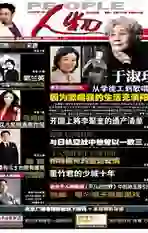Chinese Characters
2016-05-17ByGUHE
By GU HE
THE earliest Chinese characters, according to archaeological fi ndings, date back to the Yangshao Culture of the Neolithic Age, about 5,000 to 7,000 years ago. A writing system came into being in the Shang Dynasty (ca. 17th-11th centuries BC). An immense cache of animal bones and turtle shells carved with ancient characters was excavated from the ruins of the Shang capital in the vicinity of Anyang, Henan Province. These “oracle bones”mainly comprised Shang rulers records of divinations. They signify the mature and strict writing system wherein the “Six Writings” originated.
The Six Writings refer to six categories of characters, namely, pictograms, ideograms, compound ideograms, phono-semantic compounds, derivative cognates, and phonetic loans.
The Six Writings was first addressed in the Zhou Li, or Rituals of Zhou, of the Zhou Dynasty (1122-256 BC), and fully elaborated by Xu Shen (ca. 58-147) in his masterpiece Shuowen Jiezi (Explanation and Study of Principles of Composition of Characters).
Pictograms are literally characters that resemble objects. Ideograms incorporate symbols, for example, 上 shang (above) and 下 xia (below), into a pictogram. Compound ideograms combine two or more pictograms to convey a broader reference, for example, 休 (rest) is created by putting亻(person) and 木 (wood) together, giving the implied meaning of someone leaning against a tree. Ideophonograms refer to characters composed of a phonetic component and a semantic pictogram component, so inferring the pronunciation.
These four categories are actually ways of creating new characters, while the last two categories, derivative cognates and phonetic loans, denote rules for the use of characters, and have nothing to do with character formation. It is noteworthy, however, that not all Chinese characters can be explained by the Six Writings with regard to the formation of characters.
Distinct from other writing systems, Chinese characters constitute entia of form, sound and meaning. They have evolved for millennia into the “square characters” of today. Strokes compose the basic elements of a character. The character “” ,with 64 strokes, is the most complicated. Composed of four 龙(long, meaning dragon), it means garrulous. The writing system on Chinas mainland having been simplified several decades ago, the character with the most strokes is now 齉 (nang) – with 36 strokes. It combines 鼻 (bi, nose) and 囊(nang, bag) to mean snuffl ing due to having a cold.
The standard pronunciation of Chinese characters – in Putonghua or Mandarin, based on the Beijing dialect – is in four tones. This creates a distinct cadence. The singularity of Chinese characters lies in their unity of form, sound and meaning. This opens a vast source of puns. For example, the simple phrase meaning “drink vinegar” has the deeper connotation of jealousy. Various dialects also create a fascinating diversity of meanings. For example, if someone from Southwest China– Sichuan Province for instance, tells you he has lost his haizi “child,” dont be alarmed, because what he actually means is that he has lost his “shoes.”
Chinese characters are regarded as the countrys “fi fth great invention,” in addition to the compass, gunpowder, papermaking and movable-type printing. The written language is treasured as the root of Chinas splendid and time-honored civilization. With various distinct permutations and combinations, characters can form proverbs, verses, essays, and literature. Foreign students are often bemused at how certain proverbs are expressed. For example, why specify “the strength of nine oxen and two tigers” rather than of “eight oxen and three tigers,” to mean mighty effort, and “hitting the south wall,” rather than “hitting the north wall”to mean learn the hard way? The reason is that all proverbs are derived from historical stories and embody specific cultural connotations.
Contemporary writer Xiao Fuxing gave in his book Chinese Characters and Foreign Writings many examples of how fl exible and vivid Chinese characters can be. In transliterations of foreign brand names, Chinese characters convey phonetic as well as semantic elements. For example, the translation for auto brand Benz is 奔驰 – benchi meaning “gallop,”that for Coca Cola 可口可乐 – kekoukele meaning happy and delicious, and 宜家 –yijia for IKEA means comfortable home.
Chinese characters have also influenced the languages of neighboring countries like Japan, Korea and Vietnam. Written Japanese, for example, is a mixture of Chinese characters and kana.
Contemporary TV programs like Chinese Character Hero and Chinese Character Dictation Competition command huge viewing audiences. And more foreigners, through learning Chinese characters, are discovering their beauty and fascination.
